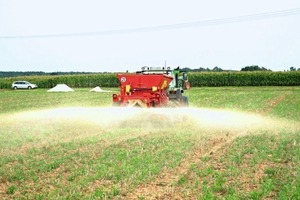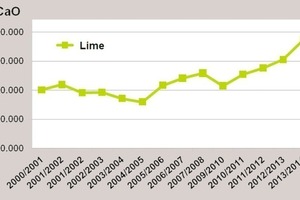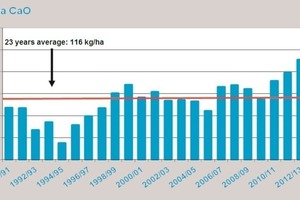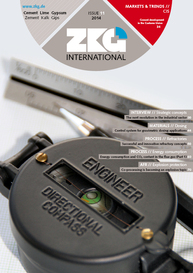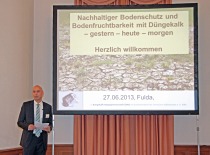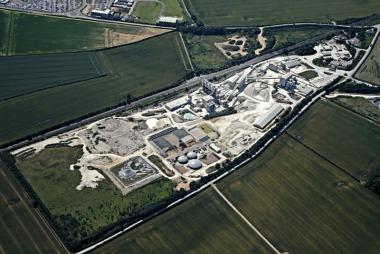Significantly more agricultural lime used in fertiliser year 2013/14
In the business year 2013/2014, German agriculture used considerably more lime fertiliser than in all previous years. Clearly, more and more farmers are becoming aware of the importance of adequate soil liming for the protection and sustainable productivity of arable land and pastures (Fig. 1).
New statistics for the sales of lime fertiliser in the business year 2013/2014 (01.07.2013 – 30.06.2014) show the increased application of agricultural limes in German agriculture. The sales volume of 2 865 000 t of CaO means that approx. 13 % more lime was used by the farming and forestry sectors than in the preceding business year 2012/2013, and even 32 % more than the average figure for the last 14 years (Fig. 2).
“The trend of increasing usage of lime fertiliser started around 2006 and is connected with the improved financial situation of the farming community, as well as an increasing awareness of the importance of soil structure and soil protection for sustainable farming”, explained Dr. Reinhard Müller, Managing Director of the “Düngekalk Hauptgemeinschaft” (the specialist lime fertiliser department of the German Lime Industry Association).
In connection with the climate protection debate, there has been increasing discussion concerning the scarcity and the importance of healthy and stable soils. Especially during periods of extremely heavy rainfall, such as that experienced in the summer of 2014, it is vital that soils can quickly absorb the rainwater and then store it. But soils can only do this if they have a good, stable structure with numerous medium-sized pores. In most soils, this structure can only be maintained if they are provided with enough lime and humus.
Soil experts are familiar with the relationship between liming of the soil and the improvement of its water absorption and storage capability. Numerous field trials have scientifically proven that optimisation of the lime content is dependent on the type of soil and on the humus content of the soil. This was already stated in the position paper of the VDLUFA (Association of German Agricultural Analytic and Research Institutes) with the title “Bestimmung des Kalkbedarfs von Acker- und Grünlandböden” (Determination of the Lime Requirement of Arable and Grassland Soils) (//www.vdlufa.de/index.php" target="_blank" >www.vdlufa.de/index.php:www.vdlufa.de/index.php) published in the year 2000.
According to this position paper, it is advisable to carry out lime conditioning or even neutralisation liming of soils in lime requirement classes “A” and “B”, in order to achieve the optimal specific pH value for the particular type of soil. More and more farmers have a good understanding of these interrelations and therefore optimise the lime content of their arable and grassland soils.
When correlated to land area statistics, the lime fertiliser usage data published by the German Federal Statistical Office in Wiesbaden enable calculation of lime usage per hectare (ha) of utilised agricultural area (LF). As the usage of lime fertiliser is showing an upward trend, while the utilised agricultural area is decreasing, it automatically follows that there is an increase in the amount of lime applied per ha LF (Fig. 3).
In the business year 2013/2014, an average amount of 172 kg of CaO was applied per ha LF in Germany. This record figure is very good news. However, given the average annual CaO losses of approx. 250–300 kg/ha – depending on the water balance and water abstraction – it has to be assumed that the amount of 172 kg/ha CaO on aver-
age (!) is still not sufficient for achieving an optimum lime content in all soils or, respectively, to sustainably maintain the optimum pH value.
Average values can only serve to illustrate a trend. In practice, it is always necessary to investigate the individual situation and then to decide on appropriate measures. For this reason, it is necessary to observe the optimum lime application and optimum pH value of every individual field in order to obtain the best soil structure and fertility. This can only be done properly by carrying out regular soil tests at intervals of approx. 3 to 4 years. The soil and the crops will benefit enormously from this procedure.
//www.naturkalk.de" target="_blank" >www.naturkalk.de:www.naturkalk.de

